The black-footed ferret is one of the most noteworthy success stories in the zoological and conservation communities. The only ferret species native to North America, these animals were believed to be extinct in 1979. Read on to learn about the black-footed ferret.
Description of the Black-Footed Ferret
The black-footed ferret is a small, lanky mammal in the weasel family. They are quite similar in appearance to the domestic ferret, but, as the name suggests, they have black feet and legs, a black “mask” around their eyes, and a cream colored body with a dark colored back.
Interesting Facts About the Black-Footed Ferret
The black-footed ferret is a secretive animal and, prior to its presumed extinction, little was known about them. With captive breeding programs and research, we have acquired much more information about these little predators.
- Mustelidae Family – The Mustelidae family, frequently referred to as “the weasel family,” contains a number of species related to the black-footed ferret. The closest relatives of the black-footed ferret are the domestic ferret, mink, marten, stoat, fisher, polecat, and wolverine.
- Nomenclature – Baby ferrets are called “kits,” female ferrets are called “jills,” and male ferrets are called “hobs.”
- All the Single Ladies – Black-footed ferret jills care for their young entirely on their own. Ferrets are solitary animals, and prefer to be alone outside of the mating season. A mother ferret will care for as many as 10 babies at a time!
- Variety, or Lack Thereof – Approximately 90% of a black-footed ferret’s diet is made up of prairie dogs! The black-footed ferret’s lanky body gives them the ability to hunt prairie dogs within their own tunnels.
Habitat of the Black-Footed Ferret
Black-footed ferrets live and hunt in grasslands, specifically prairies. These ferrets inhabit abandoned prairie dog dens, and live only where prairie dog populations still exist.
Distribution of the Black-Footed Ferret
Black-footed ferrets used to be found across 12 U.S. States, into Canada, and areas of northern Mexico. Today, black-footed ferrets are restricted to just 2% of their original range. In the wild they are found only in specific reintroduction sites.
Diet of the Black-Footed Ferret
Black-footed ferrets dine almost exclusively on prairie dogs, which they hunt by sneaking through the prairie dogs’ own burrows. Like many predators, black-footed ferrets kill their prey by biting the throat, causing suffocation. The other 10% of a ferret’s diet is made up of rats and mice.
Black-Footed Ferret Captive Breeding and Reintroduction
Black-footed ferrets were originally thought to be extinct in 1979. Luckily, a farmer discovered a surviving wild population in 1981 near Meeteetse, Wyoming. When this population began to decline in 1985, biologists sprang into action.
Over the next few years, 24 wild black-footed ferrets were captured and introduced to a captive breeding facility. Unfortunately, some of the wild ferrets succumbed to a canine distemper outbreak that had been plaguing the population, leaving just 18 animals.
With the help of domestic ferret experts, and the Association of Zoos and Aquariums, a species survival plan and captive breeding program was established. These six facilities endeavored to save black-footed ferrets:
- Toronto Zoo
- Cheyenne Mountain Zoo
- Omaha’s Henry Doorly Zoo
- The National Zoo
- Phoenix Zoo
- S. Fish & Wildlife’s National Black-footed Ferret Conservation Center.
The number of black-footed ferrets reintroduced into the wild has fluctuated greatly over the past decade, primarily due to disease. The current population estimate as of 2017 was 206 mature ferrets living in self-sustained populations.
Black-Footed Ferret and Human Interaction
Humans have impacted black-footed ferrets indirectly in numerous ways. While we did not actively hunt black-footed ferrets, we have destroyed their habitat, and killed their prey. Habitat destruction is a major obstacle for black-footed ferret survival. Land development has caused fragmented populations, where animals cannot reach separate unrelated populations to breed.
Humans also decimated prairie dog populations, labeling them as vermin. As a whole, people generally dislike property destruction. Prairie dogs dig complex tunnel systems, damaging useable grassland. Cattle and horses are susceptible to broken limbs from tripping in prairie dog holes. As an attempt to offset this predisposition to prairie dog hatred, incentives are sometimes provided to farmers with qualifying lands.
Domestication
Unlike their European cousins, black-footed ferrets have not been domesticated in any way. Captive breeding programs are designed specifically to maintain the ferrets’ wild behaviors. This increases the likelihood of survival in the wild.
Does the Black-Footed Ferret Make a Good Pet
The black-footed ferret does not make a good pet. They are an endangered species, and every animal has genetic value to the survival of the population.
Black-Footed Ferret Care
During their time in the captive breeding program, ferrets are conditioned for survival in the wild. Prior to being released, the ferrets are kept in pre-conditioning pens. These pens are used to observe the animals, and determine the likelihood they will survive when released. These ferrets are provided live prairie dogs to hunt, to test their survival skills. Successful animals are released in specific release sites.
Behavior of the Black-Footed Ferret
Black-footed ferrets are solitary animals. They live in prairie dog tunnels, and hunt mainly at night and early in the morning. They are very vocal animals, and produce a variety of chatters, whimpers, and hisses.
Reproduction of the Black-Footed Ferret
Black-footed ferrets reproduce in March and April. Female ferrets give birth to between 3 and 5 kits, which are born naked and blind. The kits live below ground in prairie dog tunnels until they are about 42 days old. The baby ferrets will remain with their mother, learning to hunt and survive, until the fall.

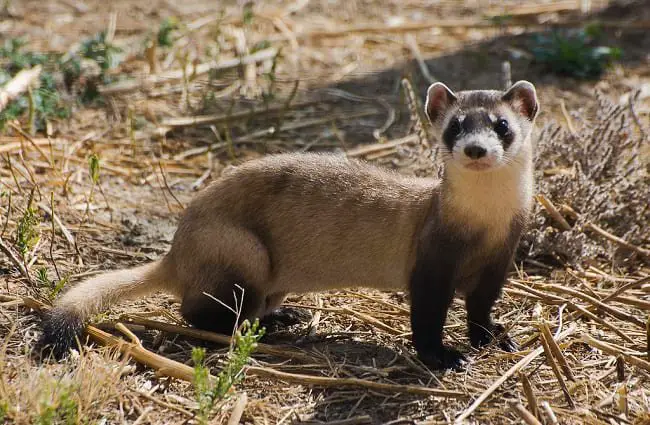
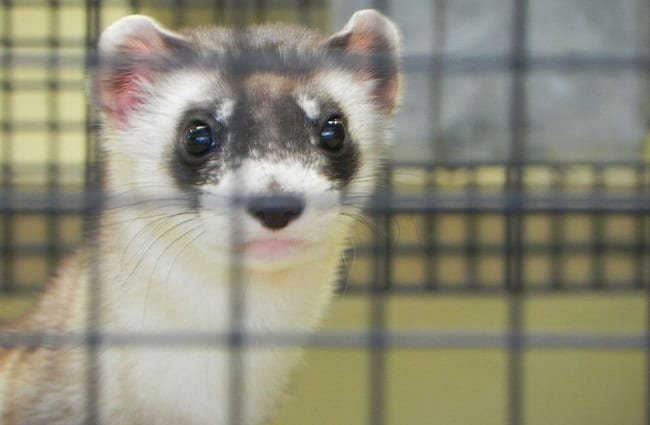
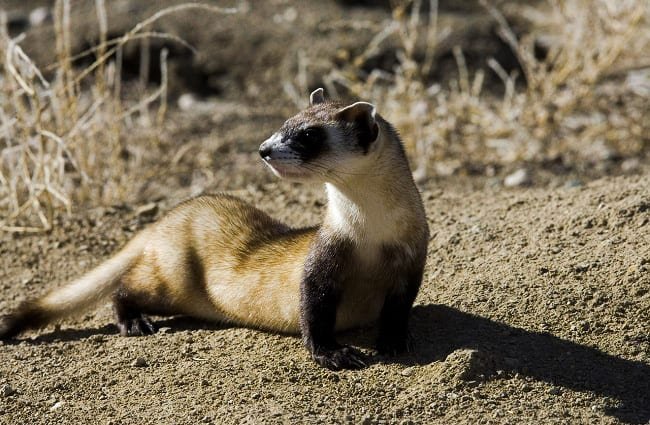
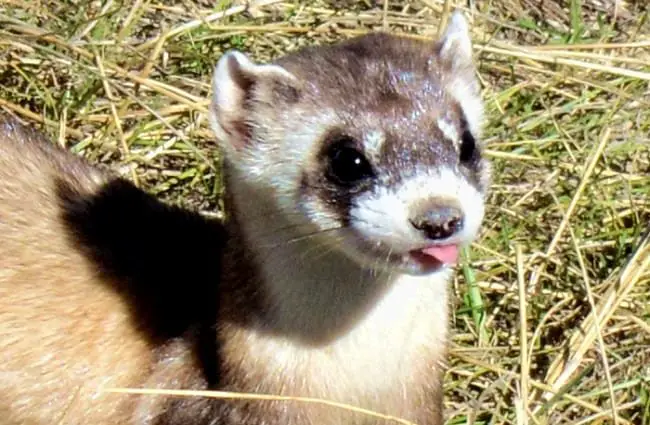
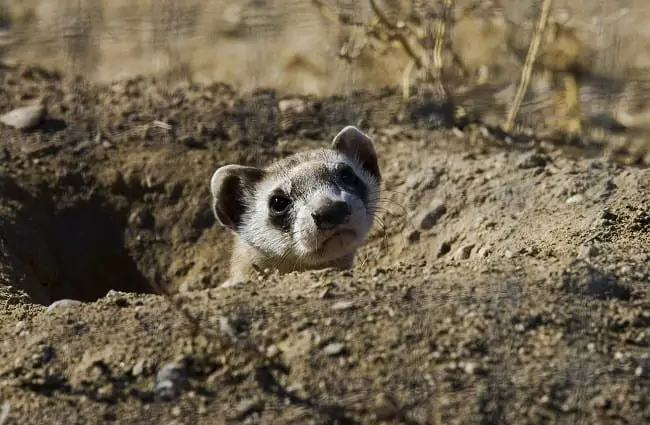
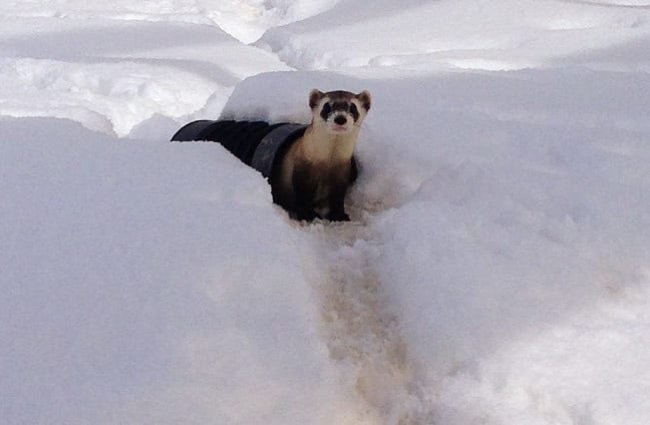
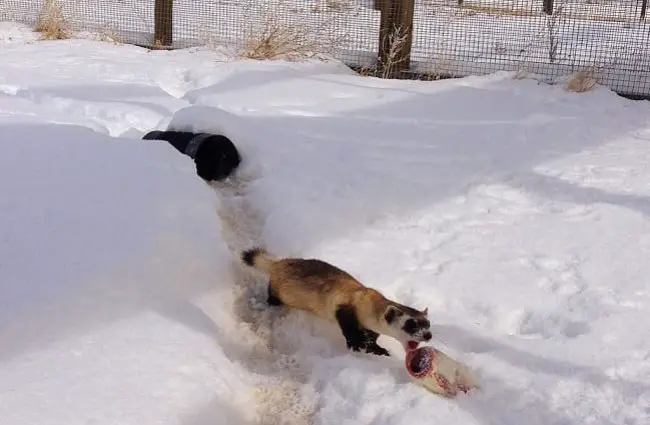
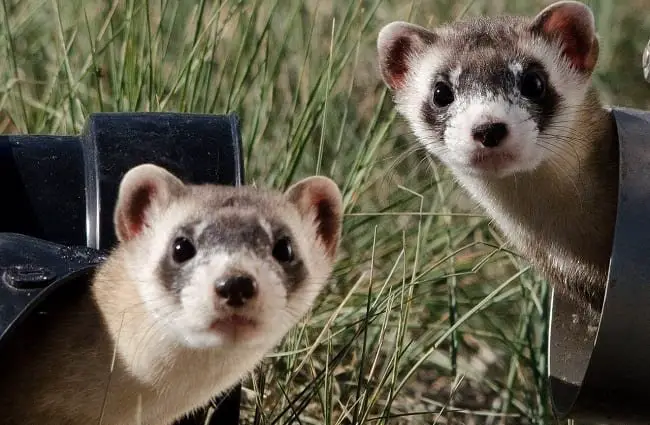
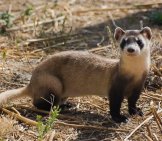
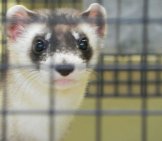


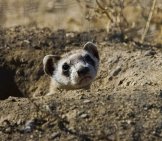
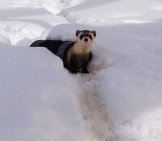
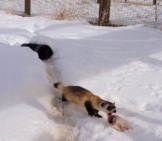

![Red Angus Closeup of a beautiful Red Angus cowPhoto by: U.S. Department of Agriculture [pubic domain]https://creativecommons.org/licenses/by/2.0/](https://animals.net/wp-content/uploads/2020/03/Red-Angus-4-238x178.jpg)












![Red Angus Closeup of a beautiful Red Angus cowPhoto by: U.S. Department of Agriculture [pubic domain]https://creativecommons.org/licenses/by/2.0/](https://animals.net/wp-content/uploads/2020/03/Red-Angus-4-100x75.jpg)

